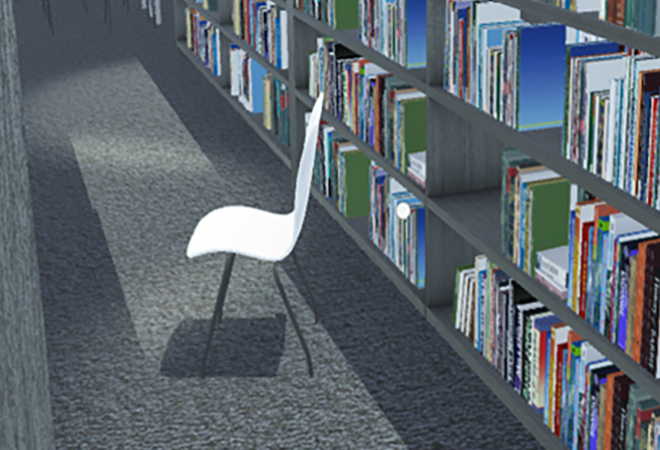
PROJECT
A Virtual Reality Tool for Teaching Library Design
Supporting learners,
Educational outcomes,
Distance and flexible learning,
Teaching strategies
Information and Communications Technology
Status
Completed: 5 April 2019
Project Details
A project to develop a virtual reality tool for teaching library design. A collaboration of Victoria University of Wellington and The Open Polytechnic.
Aims:
The main aims of the project were to:
- develop, apply and evaluate a Reusable Learning Object, specifically a virtual reality (VR) teaching tool that can be used to teach library design
- assess students on the obstacles they identify using the tool and what they propose to do about them.
Methodology:
The project methodology involved:
- developing software for use in a library design course
- assessing students on their learning
- students using the first stage tool writing a report (as an assignment) on the obstacles they identify and what they propose to do about them.
Team

Philip Calvert
Project Leader
Victoria University of Wellington
Alison Fields
The Open Polytechnic
Dr Stephen Marshall
Victoria University of WellingtonStatus
Funding
$29,500.00 (excl GST)
$13,500.00
Regional Hub Project Fund
$16,000.00
Victoria University of Wellington and The Open Polytechnic
Key Findings
Findings:
- Students found the VR software to be easy to set up and use.
- Students felt using VR was novel and fun, and that it forced them into a different way of thinking about a problem than they might have done by learning from traditional sources such as text.
- The software is flexible and accessibility tests can be switched on and off for users.
- One problem that stood out was how many students reported feeling nausea, a common problem with Virtual Reality headsets.
Key Recommendations
Recommendations:
Further funding for software development could result in a more flexible tool for further use by interested organisations.
A report prepared by Philip Calvert.
(PDF, 706 KB, 24-pages).
- 5 April 2019
This video shows what the end-user can see on screen when using the VR Library design tool.
(YouTube, 720p, 01:46 mins)
- 17 May 2019